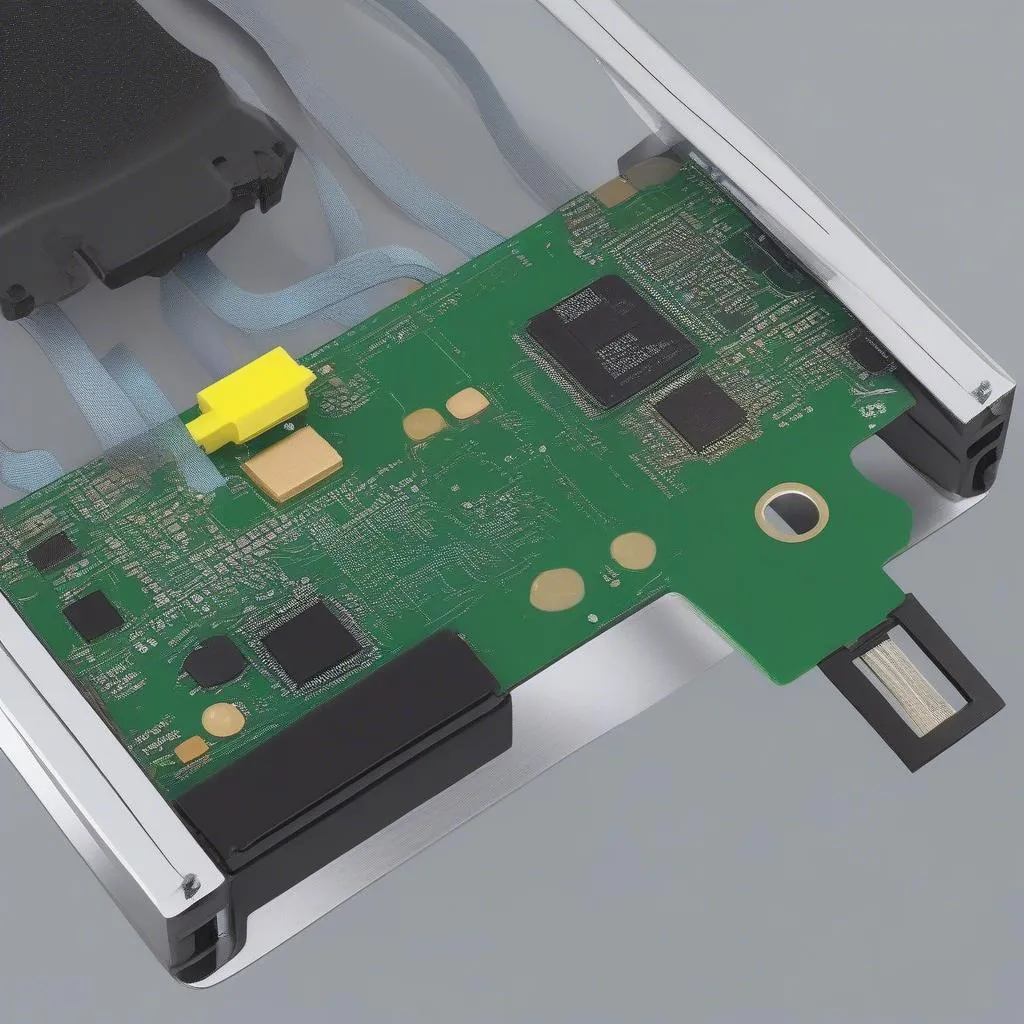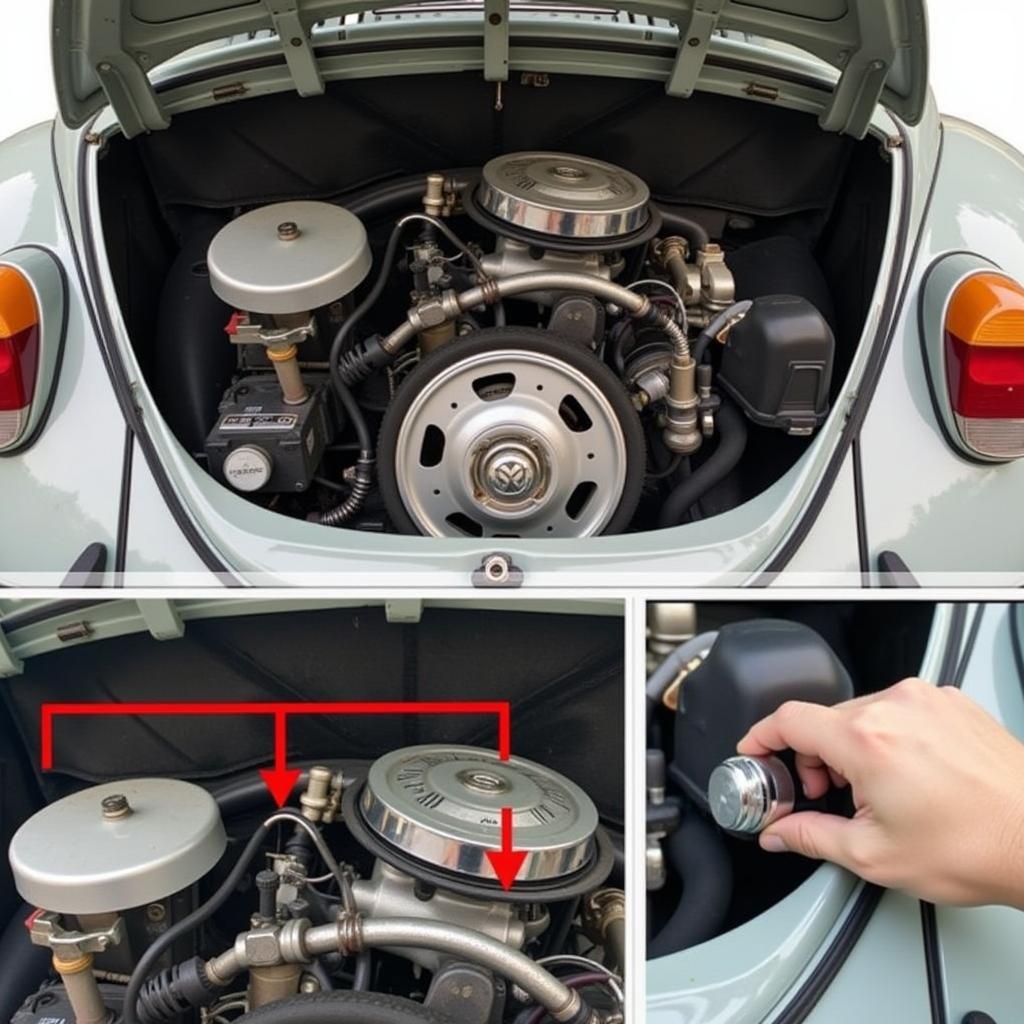Anti-theft stickers are a common sight on car windows, promising to deter potential thieves. But how effective are they, and how do you defeat them if you need to remove them without triggering the alarm or damaging the glass? This article dives into the world of automotive anti-theft systems, focusing on those pesky stickers and how to handle them, especially during diagnostic work, remote programming, and software installations.
Understanding Anti-Theft Stickers
These stickers aren’t magical deterrents. They’re part of a larger system, often indicating the presence of an alarm or immobilizer. Their primary function is as a visual deterrent, signaling to would-be thieves that the car is protected. Some stickers may contain RFID chips or other technologies, but the majority rely on their visual presence. Understanding this is crucial when working on a vehicle. Mistakenly triggering the alarm can disrupt diagnostics or even damage the car’s electrical system.
Removing Anti-Theft Stickers Safely
So, how do you defeat the anti-theft stickers without causing problems? The good news is it’s usually straightforward. Most stickers are simply adhesive-backed and can be removed with a little heat and patience. A hairdryer or heat gun on a low setting can soften the adhesive, allowing you to peel the sticker away. Be careful not to overheat the glass, as this can cause cracking. Residual adhesive can be removed with a commercial adhesive remover. However, if the sticker is part of a more complex system, like those with embedded wires, consult the vehicle’s manual or a qualified technician.
Dealing with Aftermarket Anti-Theft Systems
Aftermarket anti-theft systems can introduce complexities. These systems may have different sticker types or integrated components that require specialized knowledge to disable. It’s vital to identify the specific system installed and consult the manufacturer’s instructions before attempting any removal. This is particularly important for diagnostic specialists performing remote programming or software installations. Improper handling can lead to system malfunctions or even brick the car’s computer.
The Role of Diagnostic Software in Anti-Theft Systems
Modern diagnostic software plays a crucial role in managing anti-theft systems. It allows technicians to access the system’s settings, disable alarms, and even program new keys. This is invaluable when working on complex vehicles or troubleshooting issues. For remote diagnostics and programming, understanding the software and the specific anti-theft system is paramount.
 Using Diagnostic Software for Managing Car Anti-theft Systems
Using Diagnostic Software for Managing Car Anti-theft Systems
What Happens if I Damage an Anti-Theft Sticker?
If you accidentally damage a sticker, don’t panic. In most cases, simply removing the damaged sticker is sufficient. However, if the sticker is part of a more sophisticated system, you may need to replace it. Contact the manufacturer or a qualified technician for guidance. This is especially important for stickers that contain RFID chips or are connected to the vehicle’s wiring.
Anti-Theft Systems and Remote Programming
Remote programming and software installations are increasingly common in modern vehicles. When working remotely, technicians need to understand how to navigate anti-theft systems. This includes knowing how to disable the alarm, access the system’s settings, and ensure compatibility with the new software. A thorough understanding of the specific vehicle and its anti-theft system is essential for successful remote operations.
Bypassing Anti-Theft for Diagnostics: When and How?
Sometimes, bypassing the anti-theft system is necessary for diagnostics or programming. This should only be done by qualified technicians with the proper tools and knowledge. Incorrectly bypassing the system can damage the vehicle’s electrical system or compromise its security. where to find anti theft code Always consult the vehicle’s service manual for specific instructions.
Conclusion
Defeating anti-theft stickers is often as simple as carefully removing them. However, understanding the underlying anti-theft system is crucial, especially for professionals performing diagnostics, remote programming, and software installations. By taking the necessary precautions and following the proper procedures, you can safely and effectively work on vehicles equipped with these security features without causing harm or triggering unwanted alarms. Remember, when in doubt, consult the vehicle’s manual or seek the advice of a qualified technician.
FAQ
-
Can I remove an anti-theft sticker myself?
Yes, in most cases. However, if the sticker is part of a more complex system, consult a professional. -
What if I trigger the car alarm while removing the sticker?
If this happens, use the key fob to disarm the alarm. If the alarm persists, consult the owner’s manual or a technician. -
Do all anti-theft stickers have RFID chips?
No, most anti-theft stickers rely on their visual presence as a deterrent. -
Can a damaged anti-theft sticker compromise my car’s security?
In most cases, a damaged sticker doesn’t compromise security, but it’s best to remove or replace it. -
How do I find information about my car’s specific anti-theft system?
Consult the owner’s manual or contact the vehicle manufacturer. -
Is it safe to bypass the anti-theft system for diagnostics?
Yes, but only qualified technicians with the proper knowledge and tools should do this. -
Where can I find more information on how to deal with specific anti-theft systems? Consulting your vehicle’s manual is a good starting point. You can also find valuable resources online and from automotive specialists.


